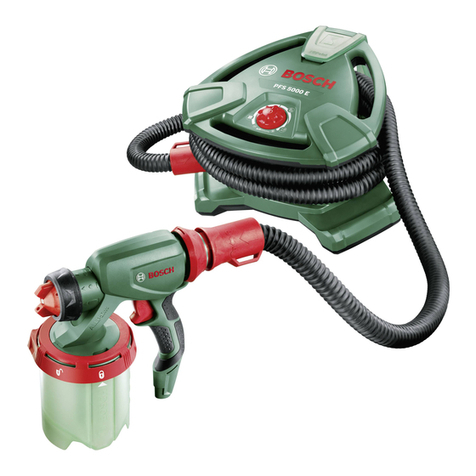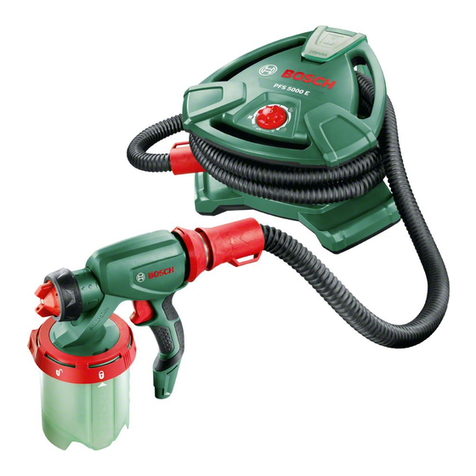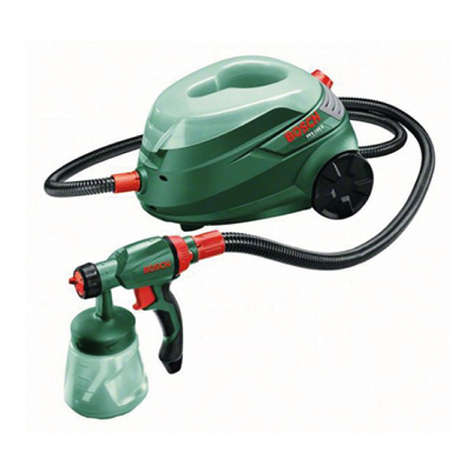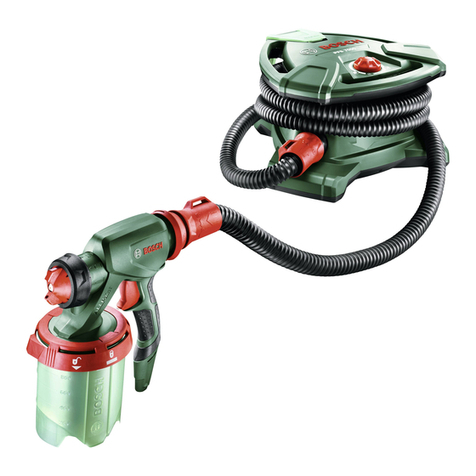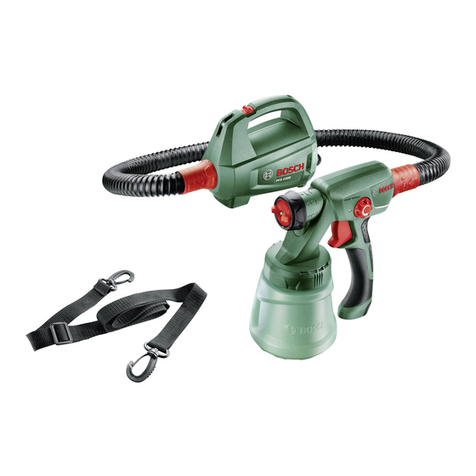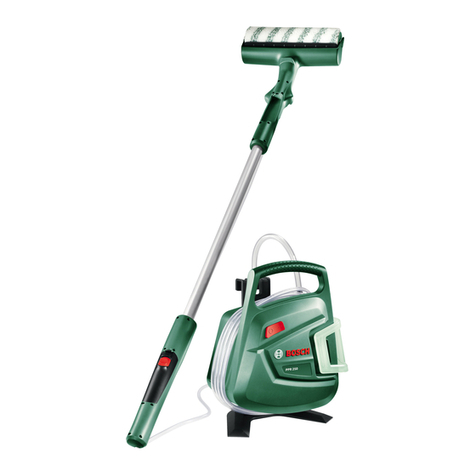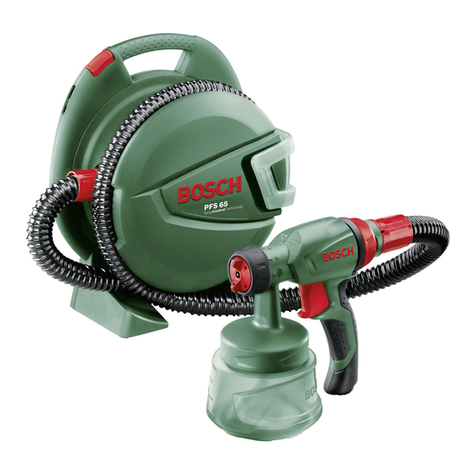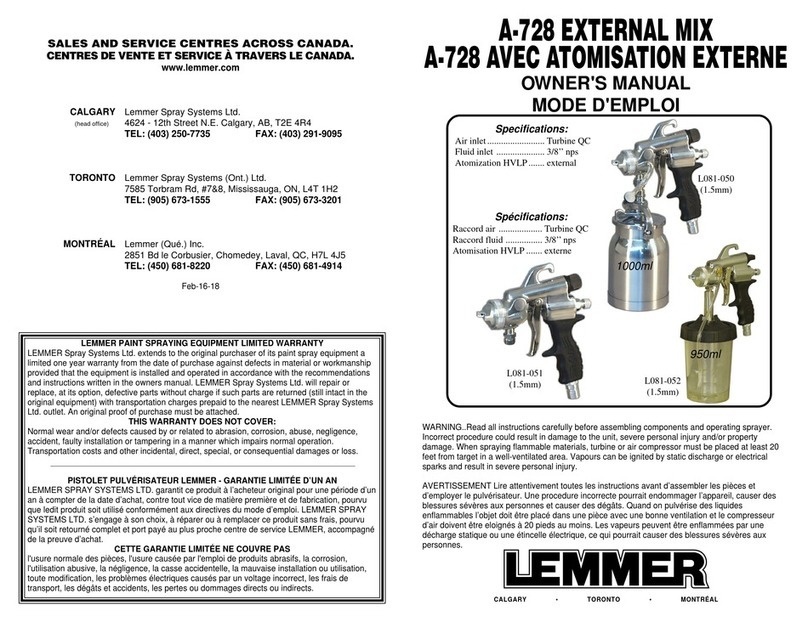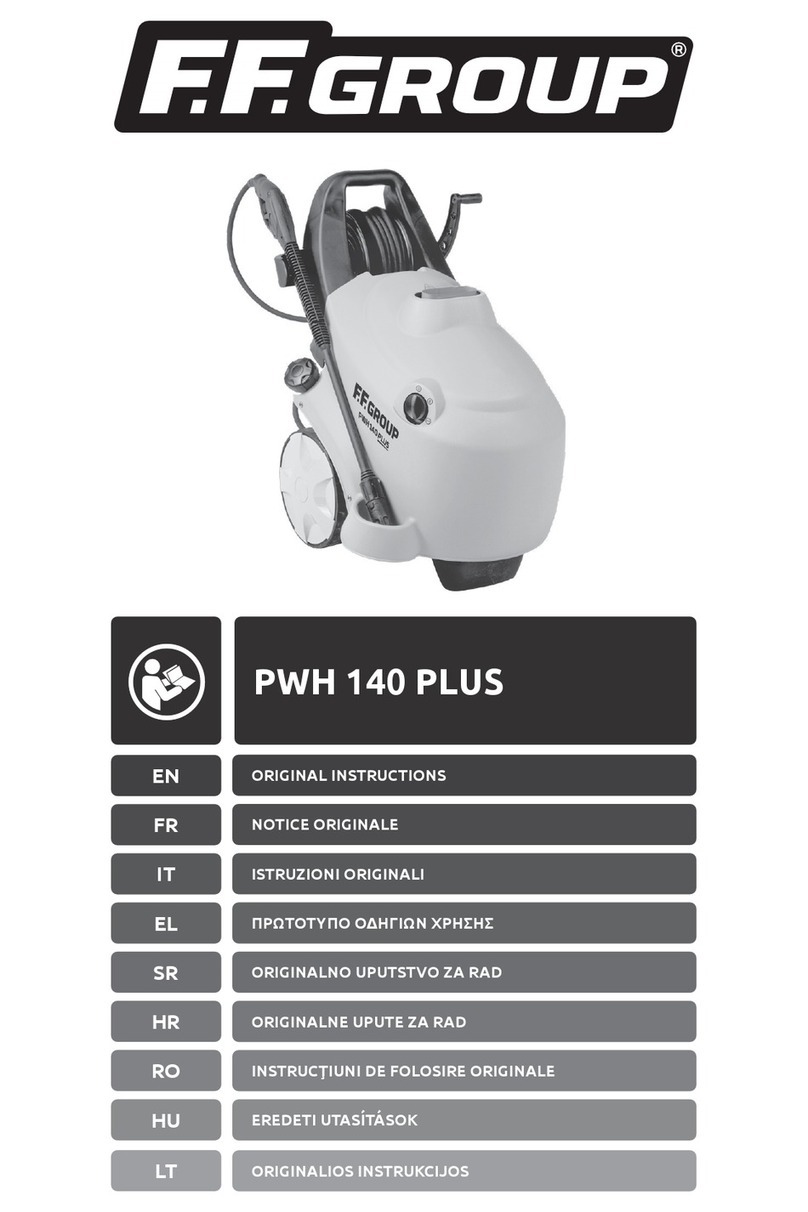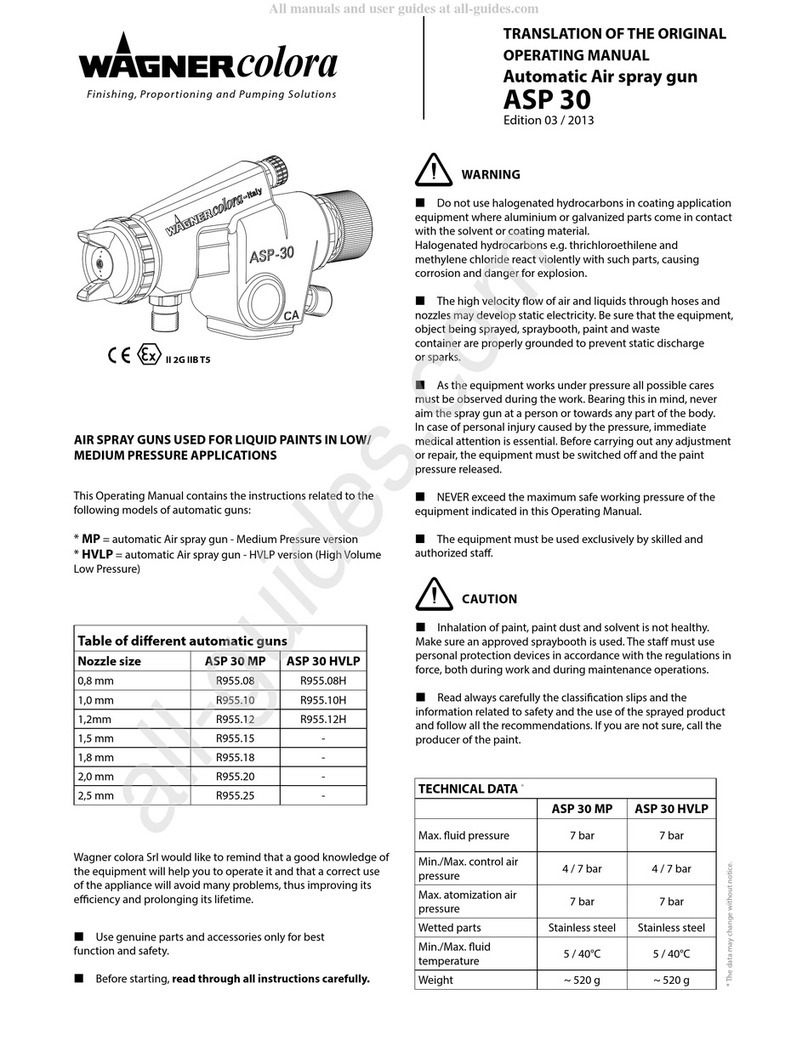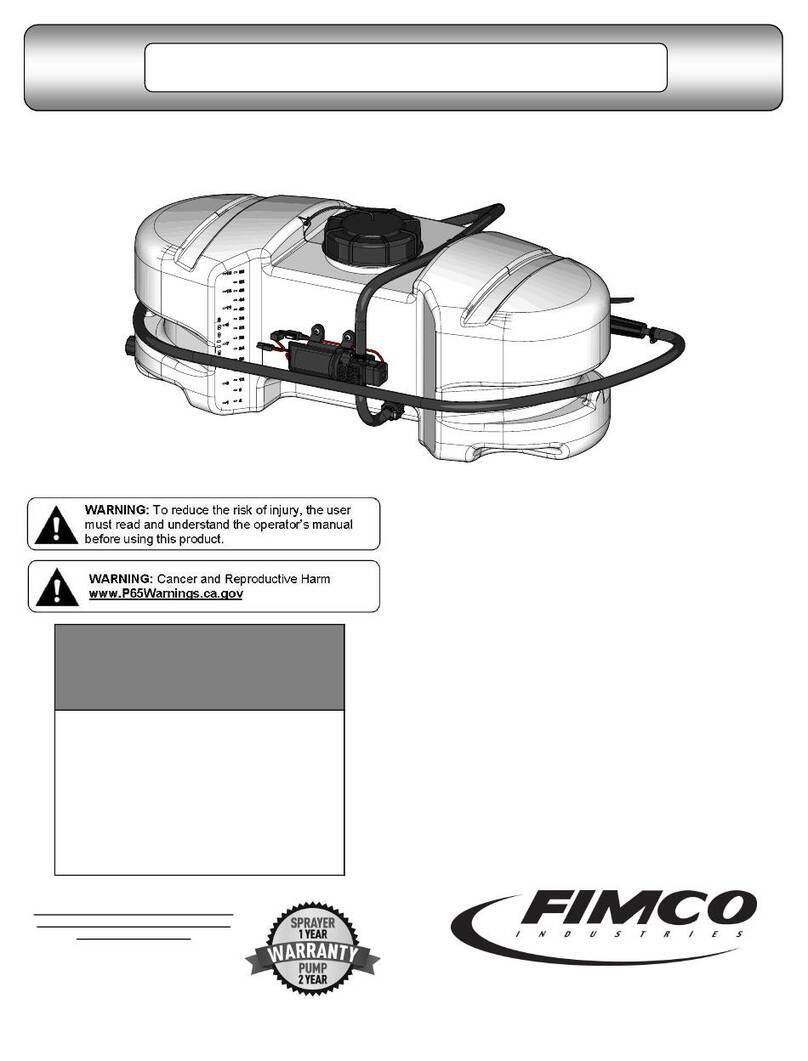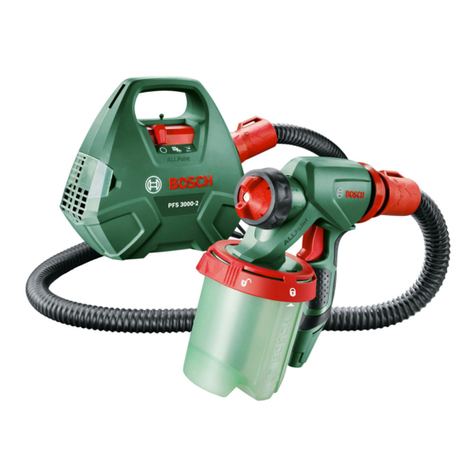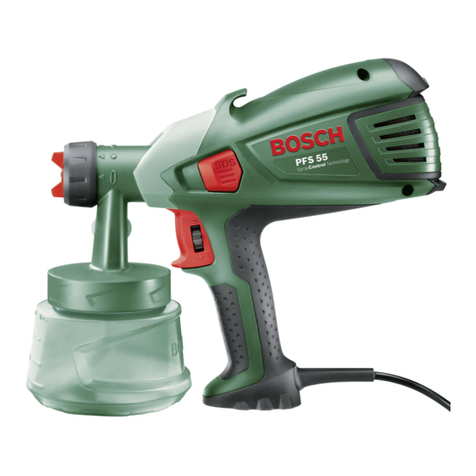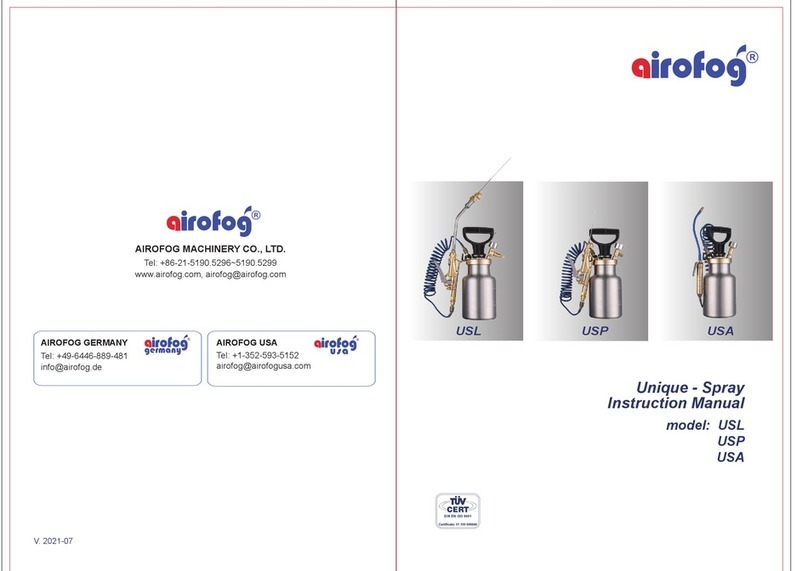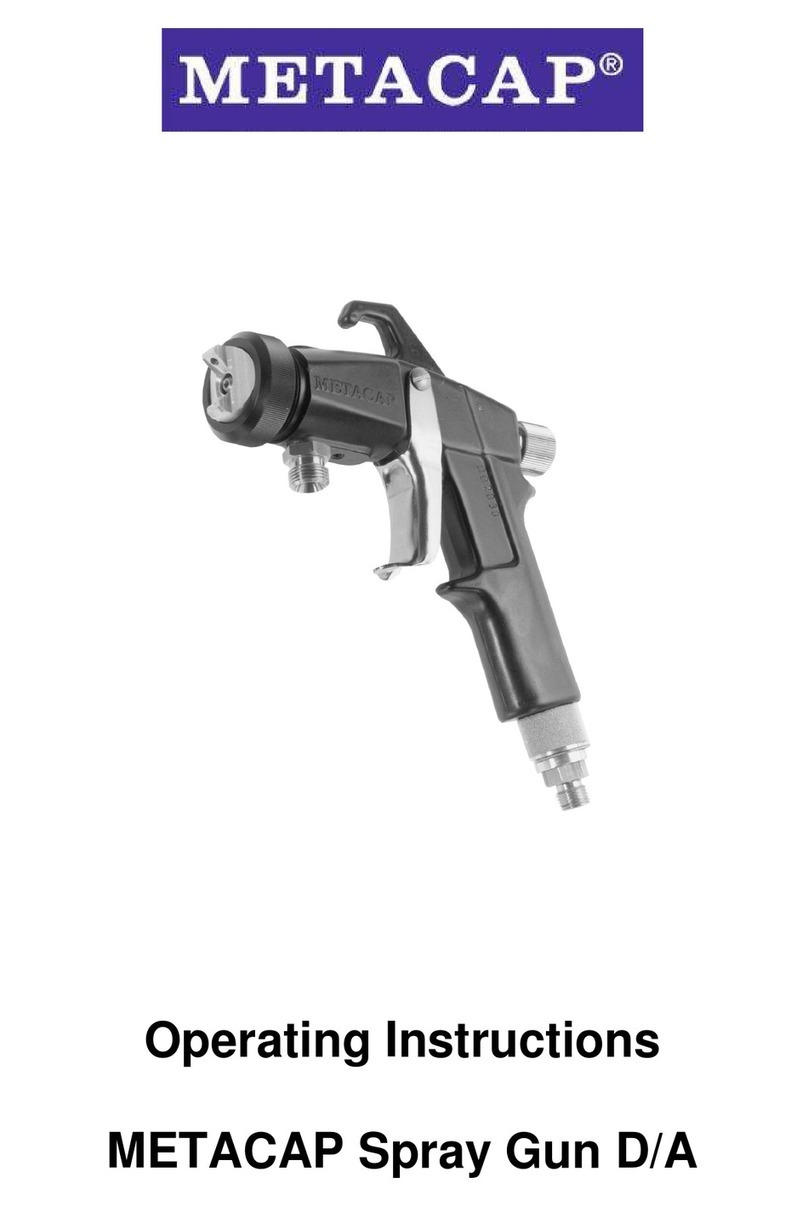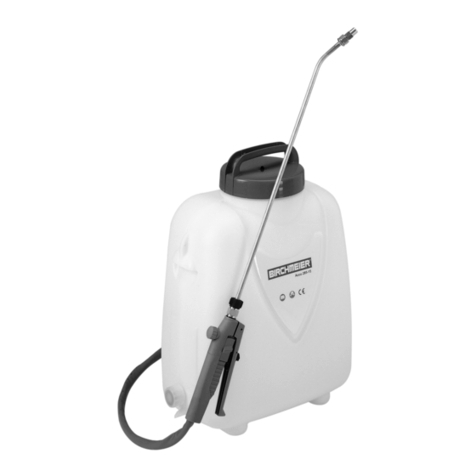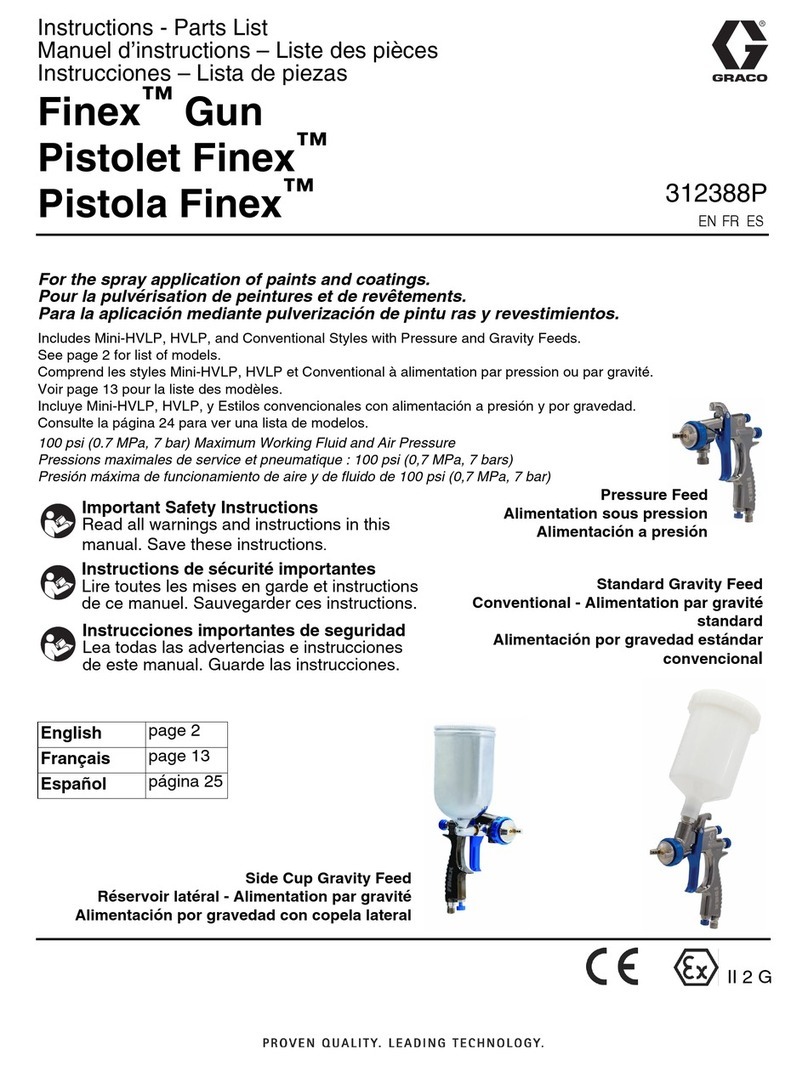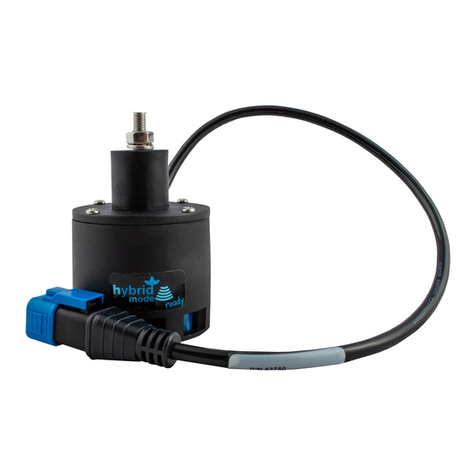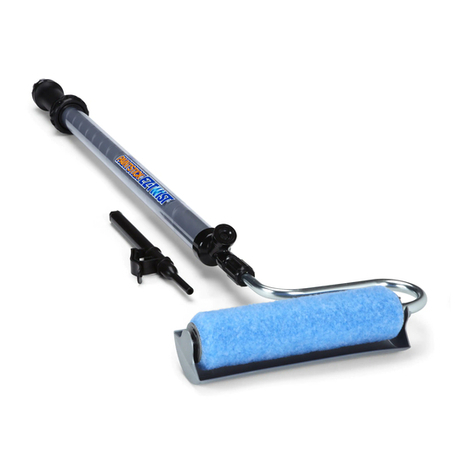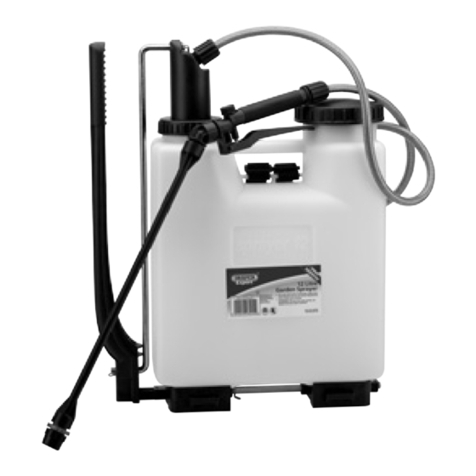
English | 15
Bosch Power Tools 1 609 929 Y12 | (22.8.11)
formed. Use of power tools for operations different from
those intended could result in a hazardous situation.
Service
fHave yourpowertoolserviced by a qualified repair per-
son using only identical replacement parts. This will en-
sure that the safety of the power tool is maintained.
Safety Warnings for Fine-spray Systems
fKeep area clean well lit and free of paint or solvent con-
tainers, rags, and other flammable materials. Sponta-
neous combustion may occur. Fire extinguisher equip-
ment shall be present and working at all times.
fProvide for good ventilation in the spraying area and
for sufficient fresh air in the complete room. Evaporat-
ing inflammable solvents create an explosive environment.
fDo not use materials with a flashpoint below 21 °C for
spraying and cleaning. Use water-based materials,
non-volatile hydrocarbons or similar materials. Fast
evaporating solvents create an explosive environment.
fDonotsprayinthevicinintyofignitionsources,suchas
static electricity sparks, open flames, pilot lights, hot
objects, engines/motors, cigarettes and sparks from
plugging in or unplugging power cords or operating
switches. Such spark sources can ignite the spraying vi-
cinity/environment.
fDo not spray any liquid of unknown hazard potential.
Unknown materials can create hazardous conditions.
fWear additional protective equipment such as appro-
priate protective glovesand protective masks or respi-
rators when spraying or handling chemicals. Wearing
protective equipment for the appropriate conditions re-
duces the exposure to hazardous substances.
fNever point the spray jet against yourself, towards oth-
er persons or animals. Keep your hands and other body
parts away from the spray jet. If the spray jet should
penetrate the skin, seek medical attention immediate-
ly from a doctor. The material being sprayed can even
penetrate the skin through a glove and be injected into
your body.
fDonottreat aninjectionasa simplecut.Ahigh-pressure
spray is able to inject toxins into the body andcause seri-
ousbodilyinjury.Intheeventthataninjectionoccurs,seek
medical attention immediately.
fBe aware of possible hazards from the spray material.
Observe the information on drums/tanks/tins as well
as manufacturer information of the spray material, in-
cluding the request to wear personal protective equip-
ment. The manufacturer's instructions are to be observed
in order to reduce the risk of fire as well as injuries caused
through toxins, carcinogens, etc.
fUse only nozzles/nozzle inserts specified by the manu-
facturer. Never spray without the nozzle protection
mounted. Use of a special nozzle insert with the corre-
sponding nozzle protection reduces the probability that a
high-pressure jet penetrates the skin and injects toxins in-
to the body.
fExercisecautionwhencleaningandchanging nozzle in-
serts. If the nozzle insert should become clogged dur-
ing spraying, follow the manufacturer's instructions
for switching off the system and relieving the pressure
before removing the nozzle. Fluids under high pressure
can penetrate the skin, inject toxins into the body and lead
to serious injury.
fKeep the plug of the mains cord and the trigger switch
of the spray gun clear of paint and other fluids. Never
hold the cord by its connectors to support it. Failure to
follow the instruction can lead to electric shock.
Products sold in GB only: Your product is fitted with an
BS 1363/A approved electric plug with internal fuse (ASTA
approved to BS 1362).
If the plug is not suitable for your socket outlets, it should be
cut off and an appropriate plug fitted in its place by an author-
ised customer service agent. The replacement plug should
have the same fuse rating as the original plug.
The severed plug must be disposed of to avoid a possible
shock hazard and should never be inserted into a mains sock-
et elsewhere.
Productssold in AUSand NZonly: Use a residual current de-
vice (RCD) with a rated residual current of 30 mA or less.
Product Description and
Specifications
Read all safety warnings and all instruc-
tions. Failure to follow the warnings and in-
structions may result in electric shock, fire
and/or serious injury.
Intended Use
The power tool is intended for atomising solvent-based and
water-dilutable paints, finishes, primers, clear finishes, auto-
motive finishes, staining sealers, wood sealer-preservatives,
plant protectives, oil and disinfection agents.
The power tool is not suitable for spraying dispersions and la-
tex paint, caustic solutions, acidic coating materials, coating
materials with granules or solids as well as spray and drip-im-
peding materials.
Product Features
The numbering of the components shown refers to the repre-
sentation of the power tool on the graphic pages.
1 Electrical unit
2Cable clamp
3Air filter cover
4SDS release button
5Mains cable
6Handle extension (only for 800 ml container)
7Screw for air-filter cover
OBJ_BUCH-670-002.book Page 15 Monday, August 22, 2011 1:10 PM












